Imagine if all bankers, healthcare professionals, and supply chain managers start making decisions based on gut feelings. How would this impact your business—or better yet, the world?
This dramatic example highlights why it is so crucial that we make decisions based on data. Enter descriptive analytics—the data analytics technique that empowers you to understand the story your data is trying to tell. Let’s take a closer look.
Table of contents:
Descriptive analytics is a type of data analytics that examines past data to offer insights into the patterns, trends, and key features of a dataset. The model utilizes advanced statistical techniques, data visualizations, and KPI reports to analyze large datasets. The result often helps us answer the questions ‘What is happening?’ or ‘What has happened?’ in your business.
Imagine you are a finance manager hoping to improve your company’s financial outlook. Here’s how combining different types of data analytics techniques can help you understand the nuances of what’s occurring so you can make data-driven decisions:
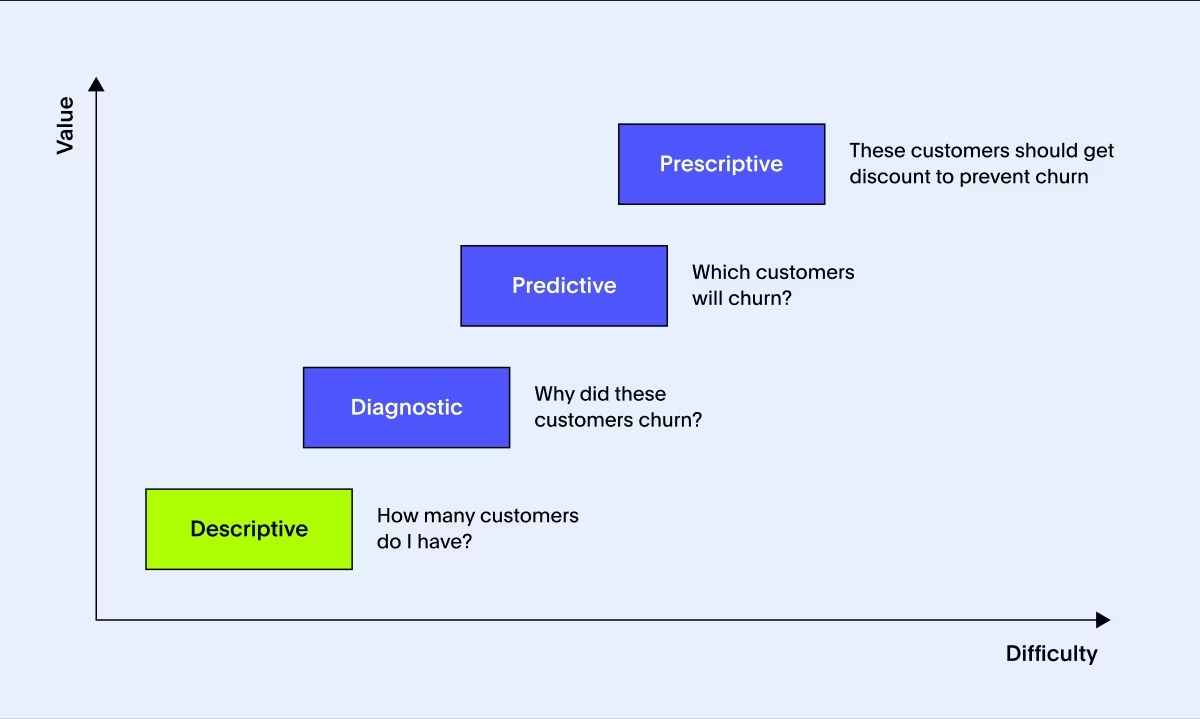
Descriptive analytics answers: ‘What has happened over the past year?’
Diagnostic analytics answers: ‘Why did specific financial outcomes occur?'
Predictive analytics answers: 'What financial events are likely to happen next?'
Prescriptive analytics answers: ‘'What actions can be taken to improve the company's financial performance?'"
In a nutshell, these powerful data analytics techniques provide a holistic understanding of your business. First, you understand past events and uncover their root causes. Next, you use data to forecast future trends and leverage AI and ML models to get actionable recommendations.
1. Improved data comprehension
Descriptive analytics simplifies complex datasets by providing clear summaries and interactive data visualizations. These data stories help you understand what’s happening across your business and pinpoint areas that need improvement.
Let’s consider Fabuwood. They needed a self-service data analytics tool that enabled real-time decision-making by providing users instant access to sales data. ThoughSpot allows users to build their own sales Liveboards and gain actionable insights from the data.
Here’s what David Samet, Director of Technology at Fabuwood, has to say about ThoughtSpot:
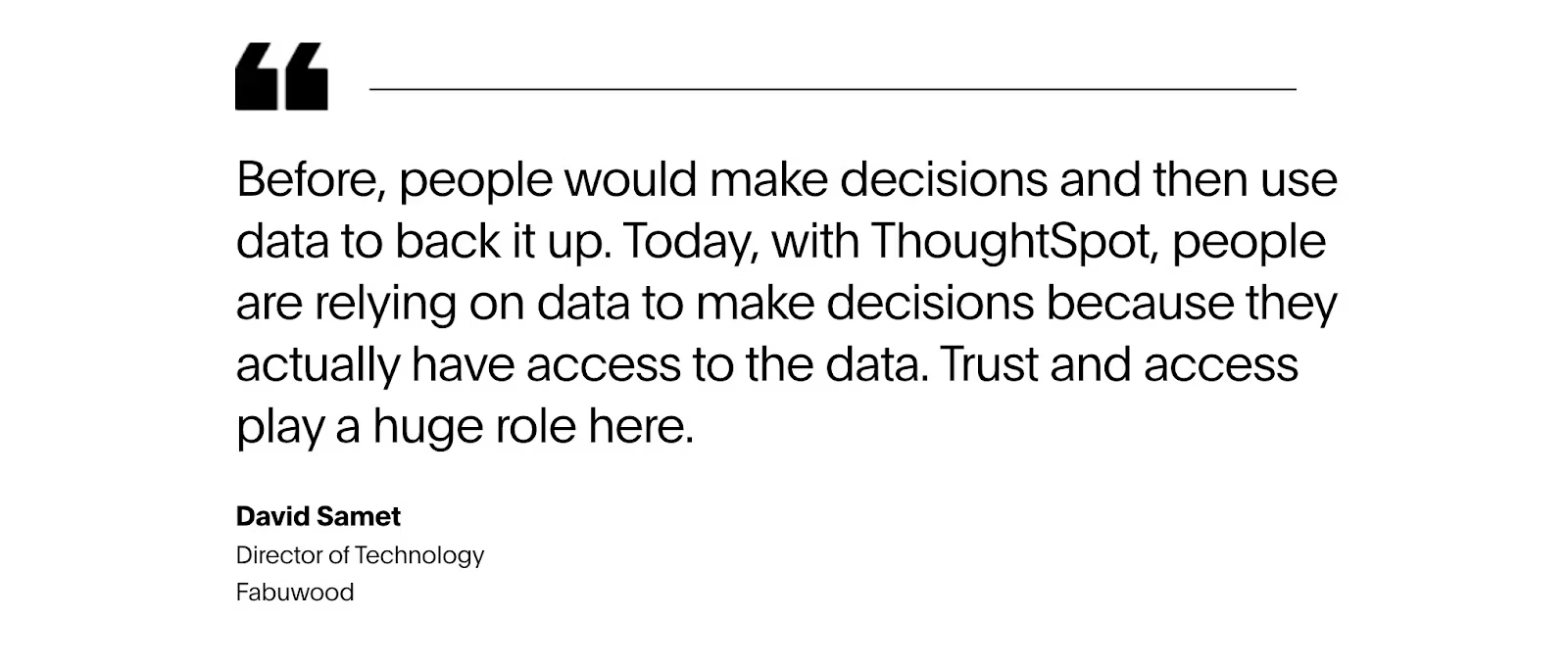
2. Optimized resource allocation
By increasing visibility into your business operations, you can reduce operational costs and optimize resources to achieve maximum efficiency. With descriptive analytics, operational teams can slice and dice into historical data, helping them identify areas for cost reduction, improve logistics efficiency, and create strategies to reduce downtime.
For example, take Harri. By embedding ThoughtSpot into its hospitality staffing platform, Harri was able to make self-service BI easy and fast for busy hospitality workers. Now, their customers and employees can create custom Liveboards, empowering everyone to track performance metrics, such as franchise location sales, staffing schedules, and employee lifecycles across different teams in real-time. This empowers Harri’s team and customers to achieve operational excellence.
Here’s how one of Harri’s valuable customers, The Radisson Hotel Group, uses ThoughtSpot:
I can give a customized dashboard to our senior leadership team that provides a high-level overview of what’s going on. When we look at the detailed data, we can get to the root of any problem in any area, especially when the candidate pipeline is scarce; this enables us to anticipate upcoming issues and gives us the ability to plan, budget, and look at sourcing trends.
3. Enhanced business strategies
Research by Gartner shows that 83% of business strategies fail due to faulty assumptions. This is why putting data at the center of strategy planning is crucial. With descriptive analytics, your team can understand how changes affect different areas of your business and drill into data to find correlations, paving the way for informed decisions.
Here’s how Wellthy’s care team leverages ThoughtSpot’s AI-Powered Analytics to save costs and find valuable insights from data:
Instead of churning out static reports and ad-hoc requests, Wellthy’s 200+ member care team is now developing new Liveboards that empower them to drill into data and proactively identify insights that reduce churn rates.
With ThoughtSpot, execs have up-to-date information that helps them make informed decisions about the direction of the company. For instance, insights gleaned from the data are helping product builders prioritize their product roadmap and create successful engagement strategies. Here’s how Kelly Burdine, Head of Data Science and Analytics at Wellthy, uses ThoughtSpot to analyze past data:
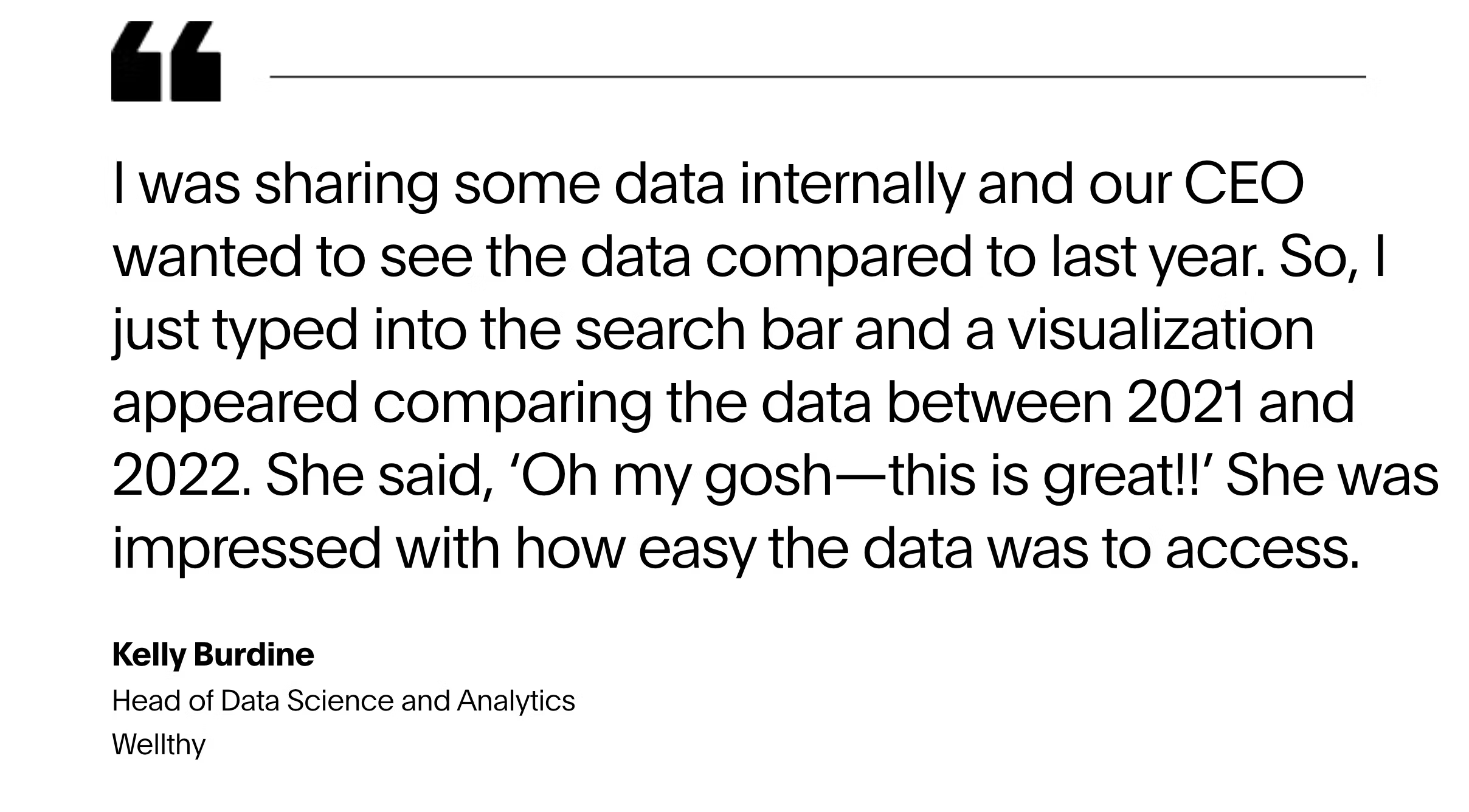
Using an intuitive BI tool for descriptive analytics, you can convert large, complex data sets into interactive data visualizations. These data stories give all users insights into past events, patterns, and trends. Let’s understand this process in more detail:
Define clear objectives: Start by determining the specific business problems or areas of interest you want to explore within the dataset. For instance, marketing leaders may want to use descriptive analytics for customer segmentation based on demographics or purchasing behavior.
Gather data: Next, collect the data relevant to your analysis. You can pull data from various sources, including cloud databases, spreadsheets, CRM systems, or customer feedback responses.
Clean the data for accurate results: Utilize data cleaning tools like OpenRefine, Trifacta Wrangler, and TIBCO Clarity to remove duplicated or missing values for accurate results.
Summarize data: Apply advanced statistical techniques to condense large datasets into concise summaries and gain an initial understanding of the dataset, identify the variables, and establish relationships.
Interpret the data: With a cutting-edge BI tool like ThoughtSpot, users of every skill can run real-time data analysis, create interactive visualizations, and gain AI-generated insights to make informed decisions. With features like ‘AI Highlights’, you can gain a quick summary of key insights from dashboards. Also, with ‘SpotIQ’, users can discover outliers, cross-correlations, and trends.
Here are a few examples of how descriptive analytics can help businesses maximize the potential of their data:
1. Finance
A business’s success relies on its ability to mitigate risks and capitalize on opportunities. By dissecting complex financial data with descriptive analytics, you gain a profound understanding of your organization's current financial state. The insights from past financial trends can help you identify risks early on and take preemptive measures to improve processes, ultimately improving the company’s bottom line.
For example, take a look at this finance dashboard. Finance teams leverage descriptive analytics to analyze their company's short assets and liabilities. These insights help the team create effective strategies to maintain optimal liquidity while maximizing profitability.
2. Inventory management
Companies lose millions due to poor inventory planning. In fact, research by Oracle shows that holding or carrying costs related to inventory planning can add up to 20–30% of your overall business cost. This creates an immense need for operational leaders to drill into data, keep track of what products or services are in stock, and see where you have shortages or overstock.
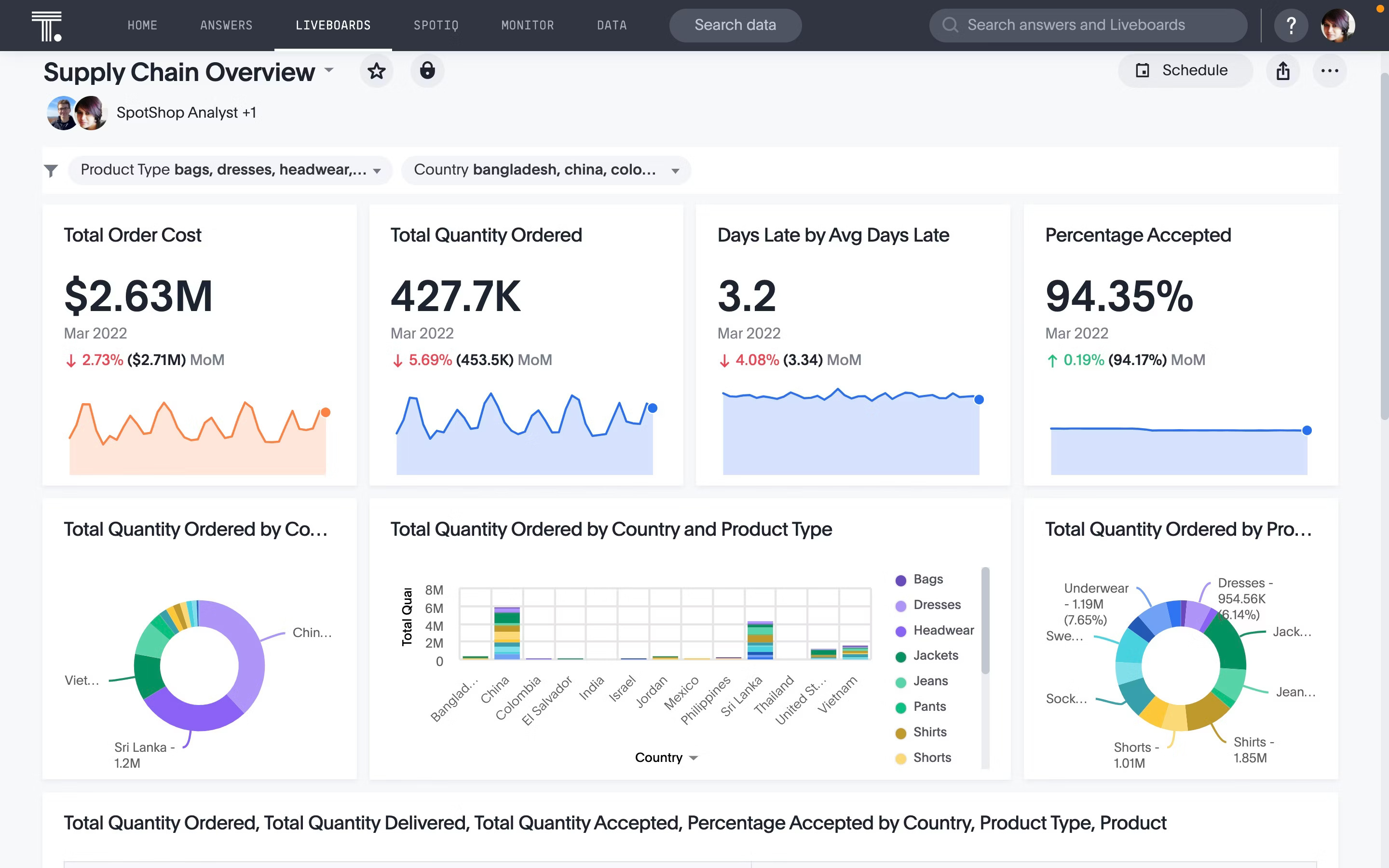
3. Marketing
Leveraging descriptive analytics, marketers gain a holistic picture of how prospects and current customers interact with their marketing campaigns. Analyzing different metrics helps you gain a performance snapshot of different campaigns, allowing you to recognize which campaigns or channels deliver the best ROI and optimize budget allocation accordingly.
For instance, here at ThoughtSpot, our marketing team uses descriptive analytics techniques such as change analysis and the monitor function to understand how prospects and customers interact with our marketing campaigns. Here’s how Katie Dunn, Our Senior Manager of Demand Generation, uses ThoughtSpot Liveboards to gain a deep understanding of performance metrics:
4. HR
With descriptive analytics, you can dig deep into HR metrics and past workforce data to understand what’s affecting employee performance. Depending on the insights you find, you can create targeted retention strategies, identify departments with the highest attrition rate, or take measures to improve overall employee satisfaction.
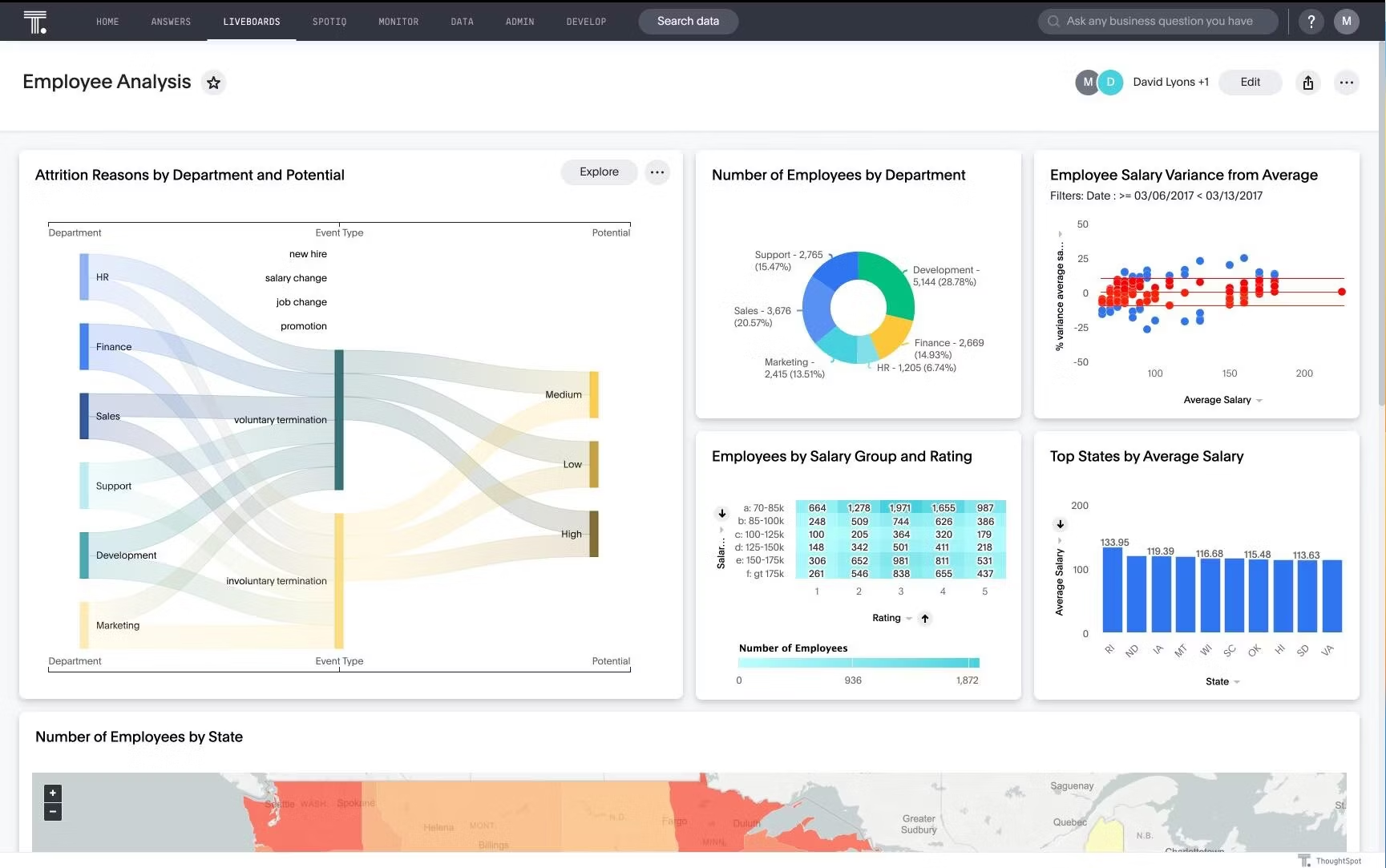
Let’s take a look at ADP, for instance. In an episode of The Data Chief, ADP’s Chief Data Officer, Jack Berkowitz, shares how the company leverages national payroll data around military members and veterans and found a significant pay gap. To address this, they create a set of planning tools that allow businesses to analyze compensation disparities—a perfect example of data monetization.
5. Sales
When used strategically, descriptive analytics helps sales managers gain visibility into their pipeline. You can unlock valuable trends in your sales data, including revenue, conversion rates, and sales growth over time. Armed with these insights, you can better understand customer behavior, adapt to changing market conditions, and stay on top of your sales goals.
As we move into an era dominated by data, your access to real-time insights can make or break your business. That’s why successful businesses like Odido, Act-On, and HP trust ThoughtSpot to democratize data and ensure that insights are available at the right time and place.
With ThoughtSpot AI-Powered Analytics, you can ask important business questions in natural language and instantly gain AI-assisted answers and insights The intuitive platform allows users to drill dow N into data, empowering them to answer ‘the next question’, without having to rely on their data team.
Ready to unlock the value of your data? Schedule a demo today.








